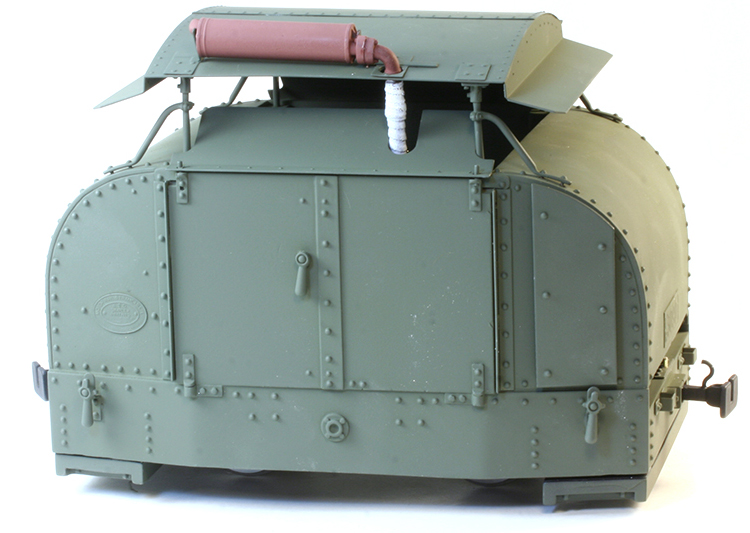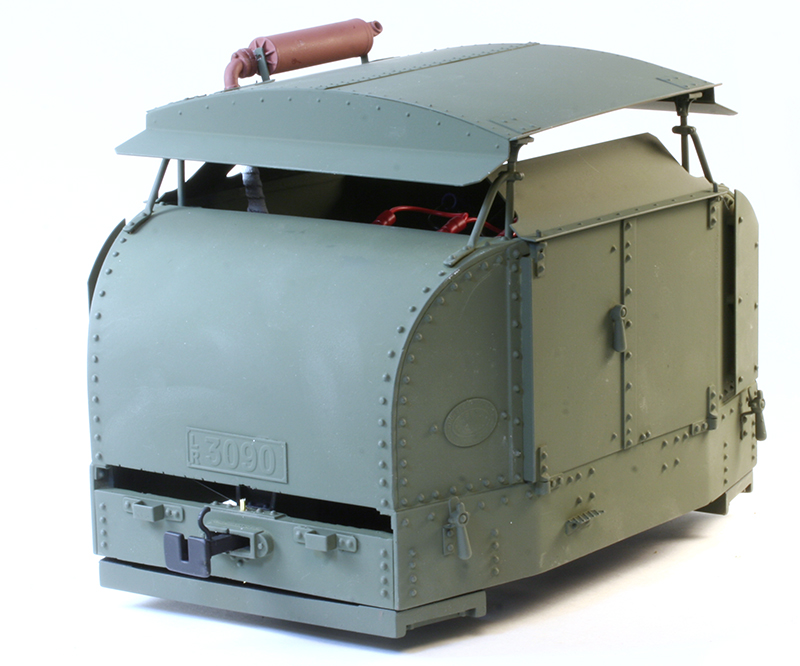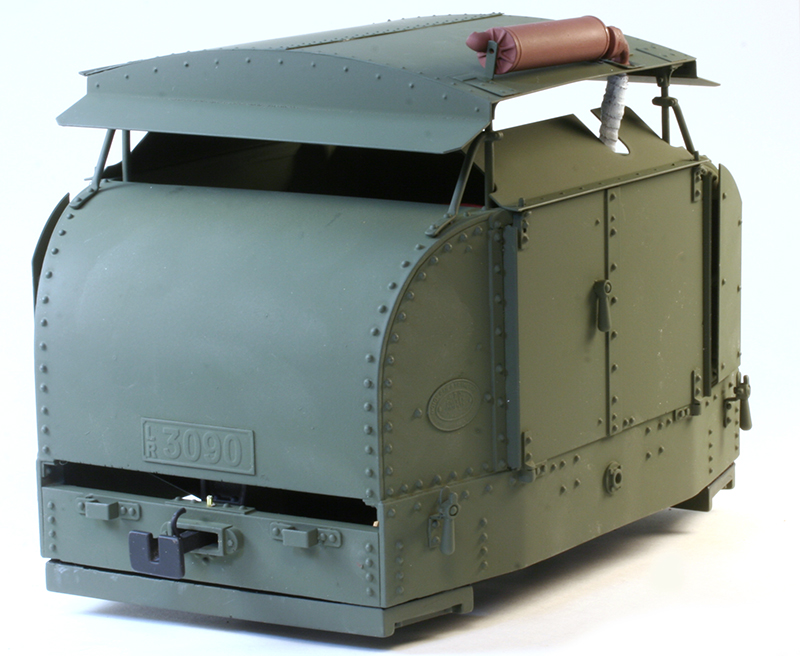Review by George Riley/photos by the author
The Motor Rail & Tramcar Company was among the first firms to mass-produce narrow gauge internal combustion locomotives or “tractors” as they were commonly know at the time. Many hundreds would be built for the War Department Light Railways during the First World War for the 60cm trench lines on the western front.
Using the Simplex gearbox patented by John Dixon Abbot these machines featured a transverse mounted gasoline engine and four-speed gearbox powering two axles through a chain drive. A Dorman 20hp two-cylinder engine powered the smaller 2-ton “bent frame” tractor, while larger versions were equipped with four cylinder Dorman 40hp engines.
While the smaller tractors were relegated to work behind the lines, the 40 h.p. models had added protection from small arms fire and shrapnel. The “Protected” version hosted full body protection with side defectors and a reinforced canopy to protect the driver. The British military even went so far as to produce a limited run of full armored simplexes which resembled small tanks rather than locomotives. The subject of our review is the former “Protected” variant which was the most numerous.

There has been a renaissance of World War One railway models recently due in no small part to the recent centennial. Swift Sixteen previously offered a full suite of SM32 WDLR rolling stock and locomotives to the modeler and has now ventured into the 7/8n2 scale with this model
The kit consists of cast resin, cast brass and photo-etched brass details; a full assembled motor block with six volt motor plus a pre-rolled brass roof. Only a few simple hand tools, paint and glue are required to assemble a nicely proportioned model. While not expressly required soldering skills are a plus, particularly when assembling the brass roof and its support posts. A small torch was all that was needed to construct this assembly.
The resin castings were remarkably clean and required only a minimum amount of cleanup with files and sand paper. Some of the mounting holes for the brass details did need to be drilled out for proper fit. The brass castings were also very clean. Each of the individual parts was thoroughly cleaned prior to assembly to remove any oils or mold release. All of the body details were assembled to the resin body using gel ACC.

Once each of the sub-assemblies was complete and the glue cured they were given a thorough cleaning before being primed and painted. Spray cans were used for priming and color coating the model A light dry brushing of tan acrylic overall provided a light weathering to the completed model. With the paint completely dry the motor block was attached to the resin chassis casting with the provided screws. The model is designed so that the upper body is removable and held in place with spring clips. This allows easy access to the internal workings.
Depending on the desires of the builder, the Turtle can either be powered with on board batteries and radio control or wipers can be added for track current pick up. Either system will result is a remarkably smooth and quiet model with substantial pulling power for its size. Our model was battery powered which added additional weight and controlled by a standard R/C system with a BEC circuit. This type of control is readily available from any hobby outlet that stocks radio control models and separate systems.
While this is not a beginner’s kit, it is not overly complex once each of the parts is identified. Build time was approximately six hours not counting drying time for paint and glue. The end result is an outstanding, nicely detailed, smooth running model of an interesting First World War narrow gauge prototype. I have to admit that this was the first venture into building a large scale locomotive model. It proved to be both satisfying and a lot of fun. Once on the rails it went through its paces flawlessly.
Swift Sixteen
10 Waun Road, St. Dials
Cwmbran, Gwent NP66 7JN
UK
Phone: +44 01633 485305
Scale – 7/8n2
MSRP – £325.00 (approximately – $428.00 USD)




